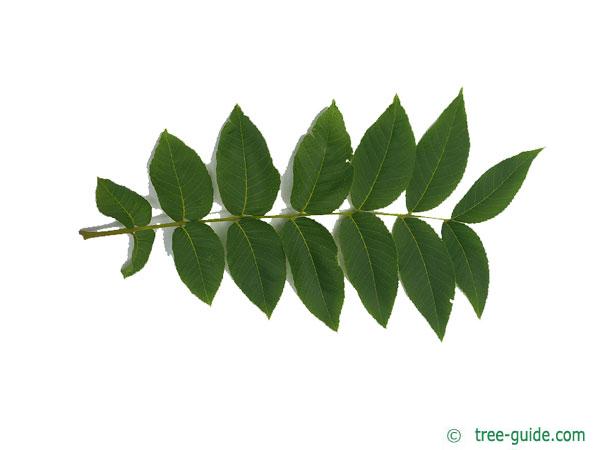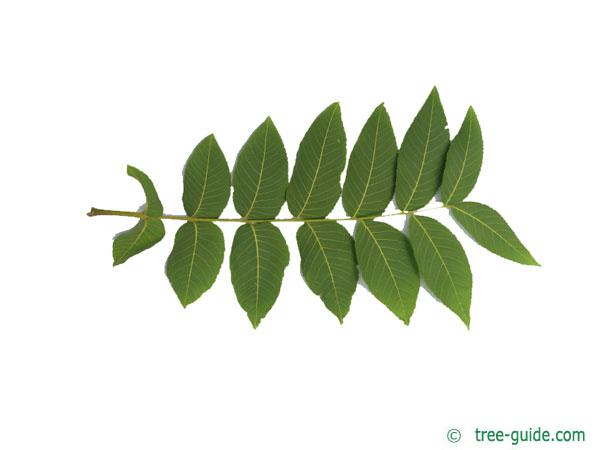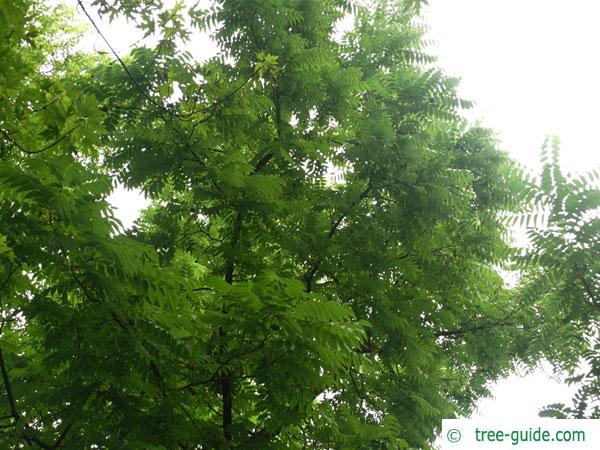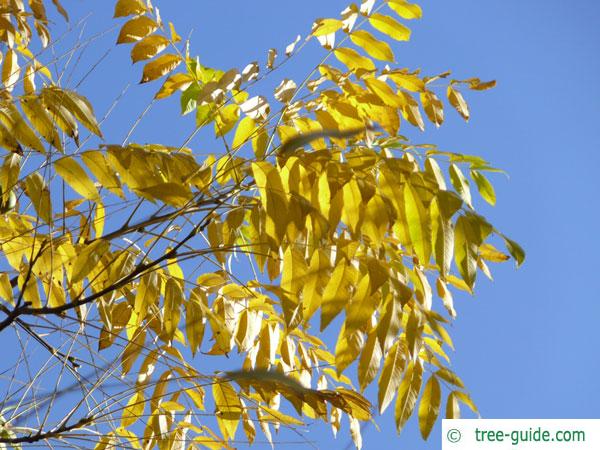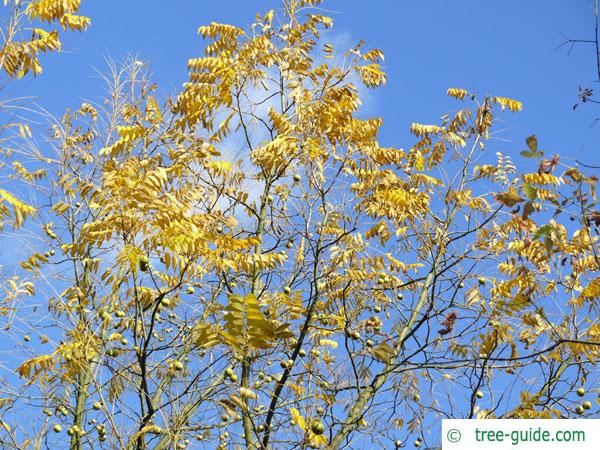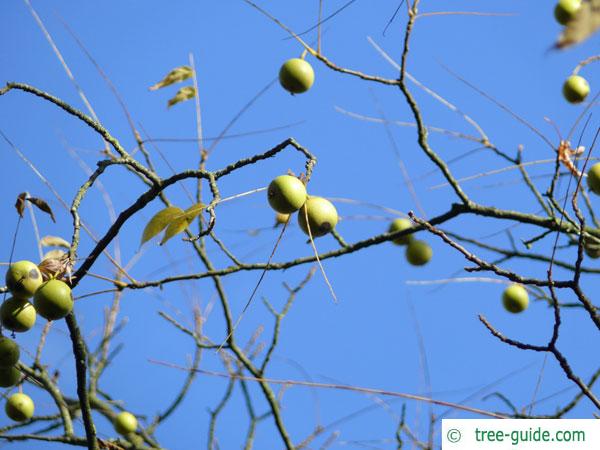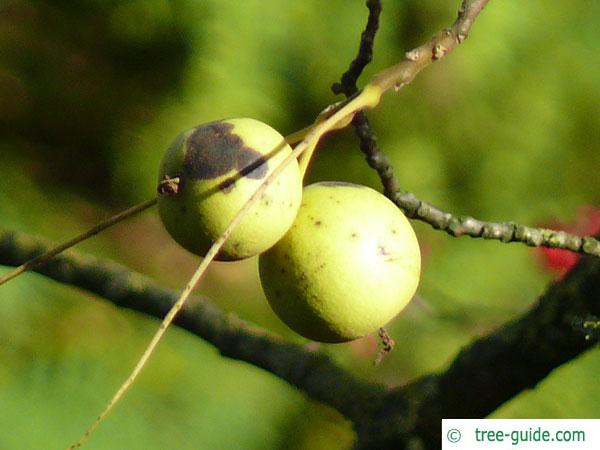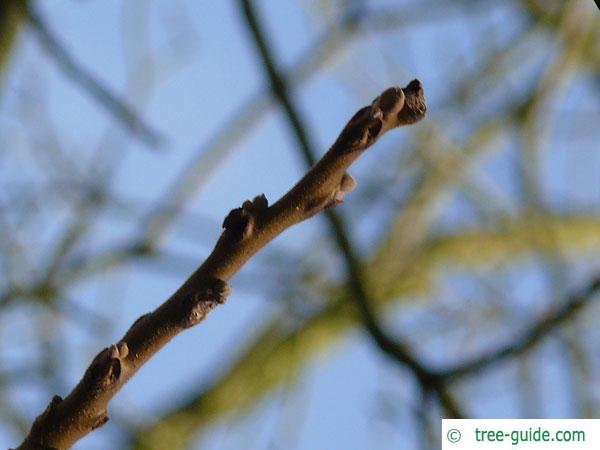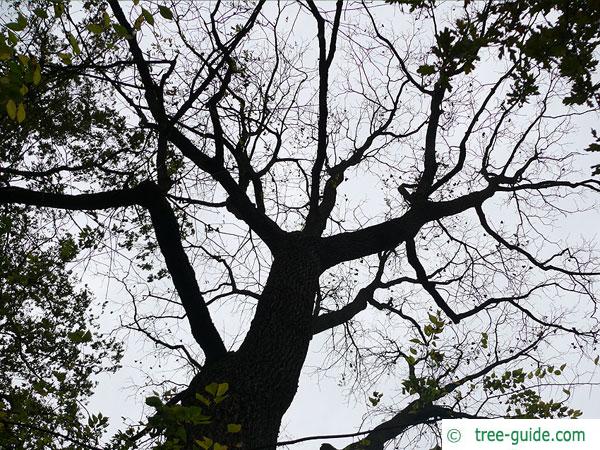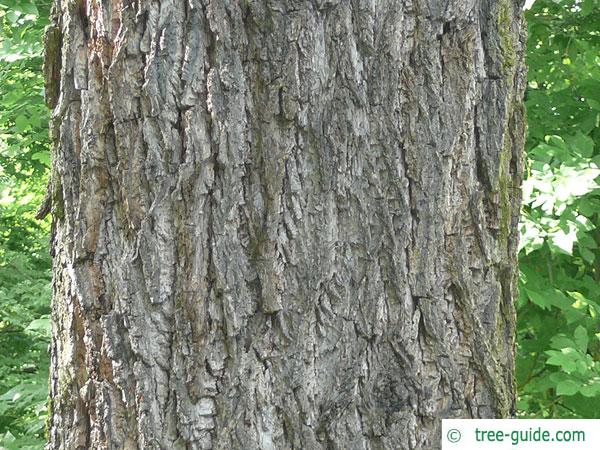Basisdaten
The black walnut comes from America, where it is found from the east coast to the middle of the country. The tree also grows quickly and is very high at over 30 m.
Tree profile
The leaves are pinnate and will grow up to 60 cm (23 in). The single leaflets are ovate, the leaf margin is serrated and the leaf arrangement is alternate. The leaves fall off in autumn relatively early.
The male flowers hang in long kittens. The female flowers stand upright and are inconspicuous.
Nut: The young nuts taste best but are hard to get out of the shell.
The twigs are reddish brown to brown and the buds are round to slightly oval







